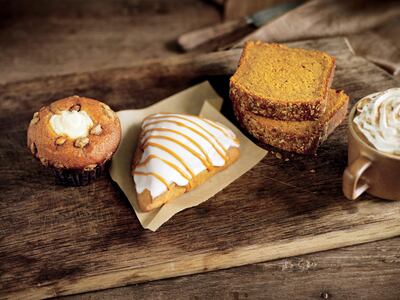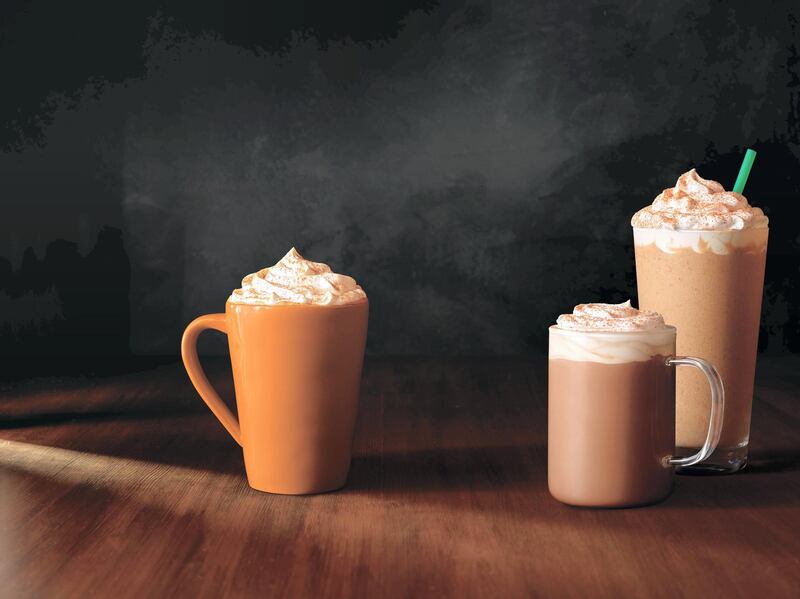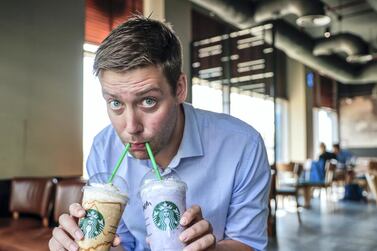First made available to the public in 2002 in a handful of North American stores in Vancouver and Washington, DC, the Starbucks pumpkin spice latte started as an experiment. The coffee chain's product manager, Peter Dukes, spent months developing a new seasonal drink in the Starbucks laboratory. Despite the pumpkin-flavoured drink not being the most popular in internal testing out of the 10 created, it was chosen as the conglomerate's new product in the belief that there was nothing like it on the market.
The drink went national the following year, and that mix of pumpkin-spice sauce, cinnamon, clove and nutmeg, topped with whipped cream and pumpkin-pie topping (for the first two years the original recipe didn't contain any real pumpkin) was an instant hit. In 2014, Starbucks stated that it had sold 200 million pumpkin spice lattes in that year alone. The PSL – as followers dubbed it – became such an Instagramable trend that there was the inevitable backlash and it became a signifier of being "basic", along with wearing Ugg boots and being a Sex and the City fan.
It may have been perceived as the drink of choice for the basic girl, but estimates from Starbucks claimed that more than a third of people buying the drink were male.
Why the drink has become such a hit around the world
More than just a seasonal boost to Starbucks's bottom line, however, the drink has grown to become the cultural signifier that the summer is over and "fall" has begun – or, for our part of the world, that it's finally getting cooler. Forbes estimated that the PSL was bringing in more than $100 million (Dh367.2m) of revenue each season, and its global success, with sales in more than 50 countries, has inevitably created a pumpkin market as other brands aim to cash in on the trend.
McDonald's, Dunkin Donuts and other fast-food chains have all launched their own pumpkin- flavoured drinks, while products as diverse as candles, hand soaps and even deodorant have been given the pumpkin-spice treatment. Figures from consumer trends data analyst Nielsen reveals that sales of pumpkin- flavoured food, personal and household goods in shops across America alone have grown by almost 80 per cent since 2011.

Given the popularity and revenue it generates, it's no surprise that Starbucks's pumpkin spice latte has been appearing in stores a little earlier each year. This season, it first appeared in Starbucks in some American cities from as early as August 27, as the chain worked to maximise upon one of its seasonal bestsellers in the belief that the limited-time appeal – one of the key drivers in its original success – won't be diminished by expanding the window of availability.
The ingredients inside the popular drink
So what’s really in a pumpkin spice latte and why is it such a hit? Essentially, it’s like drinking cake, and who doesn’t like cake? Starbucks says the official ingredients at present are “pumpkin and traditional fall spice flavours combined with espresso and steamed milk, topped with whipped cream and pumpkin pie spice”. The key to why people crave the drink, then, is not just the hit of caffeine, but also the combination of sugar, fat and a dash of salt.
A grande PSL contains 14 grams of fat, 8g of which is saturated fat accounting for 40 per cent of a person's recommended daily total. The 240mg of sodium accounts for a tenth of your daily amount, and that's paired with 50g of sugar – which is about four tablespoons. That combination creates a reaction in your brain that several studies indicate mimics a rush that's comparable to some drugs, with a trifecta of ingredients that humans are evolutionarily hardwired to crave. It also contains up to 380 calories, which is the same as about four bags of crisps.
Of course nobody, least of all Starbucks, is suggesting that the PSL is a health drink, but it’s that combination of ingredients that are so bad for you, it tastes good.
More seasonal drinks have been launched off the back of PSL's success, although none have come close to being as big a hit. However, given that it's still pretty hot in the UAE at this time of year, there's a new pumpkin addition this season: the pumpkin spice cold brew has made its Dubai debut, and contains vanilla syrup topped with pumpkin cream cold foam sprinkled with cinnamon, nutmeg and clove.







